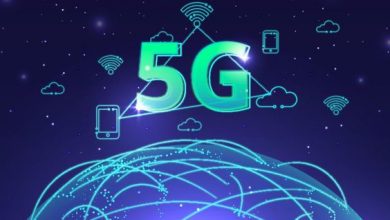Environmental Effects of 5G

Once we were part of nature, now we have grown more apart from nature.
So that we forget to consider the outcomes of our actions on the environment.
Especially when the short-term advantages cloud our considerations for the future.
But we do not forget about what is bad for the environment is also ultimately bad for humans, animals and also the effects of 5G has pulled a bit of a fast one on us.
Some Environmental effects of 5G

We are now connected to everyone and everything. Our health is directly connected to the health of our planet.
We can operate in an individualistic society, but the true fact is that we are collectively linked with each other and a global community united by a shared home.
The effect of 5G is getting higher and higher. It is not just a faster network than 3G or 4G but there is a lot more to it.
And unless we actively looking out what it entails. This information does not come as common knowledge.
Have a look at what we discovered on our dig to unearth the ultimate effects of 5G.
Infrastructure Boom
As we already mentioned, it’s magic to start working for 5G, a lot of new infrastructures are required.
This includes MIMO base stations, satellites, small cells, and devices that are compatible with 5G technology.
Essentially, we are overhauling the whole system that needs a lot of toxic chemicals and nonrenewable metals.
The life expectancy of such satellites is about five years.
Then, top it all off, all present cell phones, unless, of course, we already have a 5G cell phone, will need to be tossed out and replaced with a brand new 5G compatible device.
Energy Consumption
The increment of energy goes hand and hand with 5G creating its way around the world is substantial, and the timing could not be worse.
The available ratio of data to energy consumption with 5G is 1:1. In other words, if 5G is liberal to deliver up to 1,000 times more data, that means doing so could consume up to 1,000 times more energy, according to Dexter Johnson’s write-up on IEEE Spectrum.
The International Telecommunication Union has published various needs on latency, data rates, and reliability that a network needs to demonstrate to be called 5G.
Also, they have a goal for better energy efficiency.
Still, they have yet to establish any measurable parameters which suggest their goal will be reached even though 5G is currently being rolled out.
Another report by the GSM Association stated that the telecom industry currently consumes about 3% of global energy.
By 2026, with the help of 5G and all its components, energy consumption will jump 170%.
Many experts are expecting that once the infrastructure of 5G is in place then the work can be done to increase its overall energy efficiency.
But the goal, for now, looks to be to get it up and running and get everyone linked, then worry about the environmental and health issues later.
EMF pollution
Electromagnetic field pollution is already a big issue becuase we are currently living in a fully digitalized world.
Though, we can still limit our exposure by doing things like keeping our devices out of the bedroom at night, shutting off our Wi-Fi router and keep our cell phones out of our pockets, keeping our laptops off our laps, and avoiding Bluetooth earbuds.
With 5G, it will be a bit tricky since the source of the higher-frequency millimeter waves will be all around and in much closer proximity.
This is an issue we will undoubtedly need to come up with a solution for.
But, what about other mammals?
How will this huge increase in EMF pollution affect our wild and domestic mammalian friends?
An independent research firm “found evidence indicating the 5G poses a major threat to all biological life.”
Animals also have similar immune systems, reproductive organs, and nervous systems as humans.
For such cause, they are just as susceptible to the outcomes of prolonged exposure to EMFs as humans are.
And let’s not forget that most animals rely on the magnetic field for migration and navigation of earth.
The saturation of human-made EMFs certainly can interfere with the natural ones.
In the same way, they interfere with our own internal electrical signals.
E-waste
According to the report of the UN, “the world produces as much as 50 million tons of electronic and electrical waste a year, weighing more than all of the commercial airlines ever made. Only 20% of this is formally recycled.”
By 2030, it is evaluated that this amount will increase to nearly 75 million tons.
The basic reason for this is that more people are purchasing electronic products with shorter lifecycles and fewer options for repair.
When it’s time to switch from 4G to 5G, a new phone will be needed.
Probably we are thinking, where in the world does all this e-waste end up?
Well, some end up in our landfills, but a lot of it ends up in countries like Pakistan, Nigeria, and Ghana, where workers sort through the parts, manually break down the items and sell anything that is of value.
What is not of value often makes its way into the waterways and out to sea.
E-waste has various toxic chemicals, like mercury, arsenic, barium, lead, and chromium, which the e-waste workers are also exposed to for lack of safety regulations.
The waste that ends up in a landfill can eventually contaminate the water table and affect surrounding communities.
If you are going to throw away any electronic item, the best thing you can do is make sure you take it to an electronic recycling center or donate it if it’s still in working condition.
Insect Apocalypse
Whether you are absolutely enamored by them or terrified, insects are key to our survival and the survival of many animals and plants.
One-third of our food production relies on pollinators like bees. Insects are essential members of nearly all terrestrial ecosystems and many aquatic ones too.
Effects of 5G might have pulled a fast one on us, but together we can create actionable solutions to protect ourselves and the environment.
The best way is to start getting informed. And to keep in mind that what’s good for the planet is good for us!
Read More: 5G Effects: Different Studies on Negative Effects From 5G Technology




